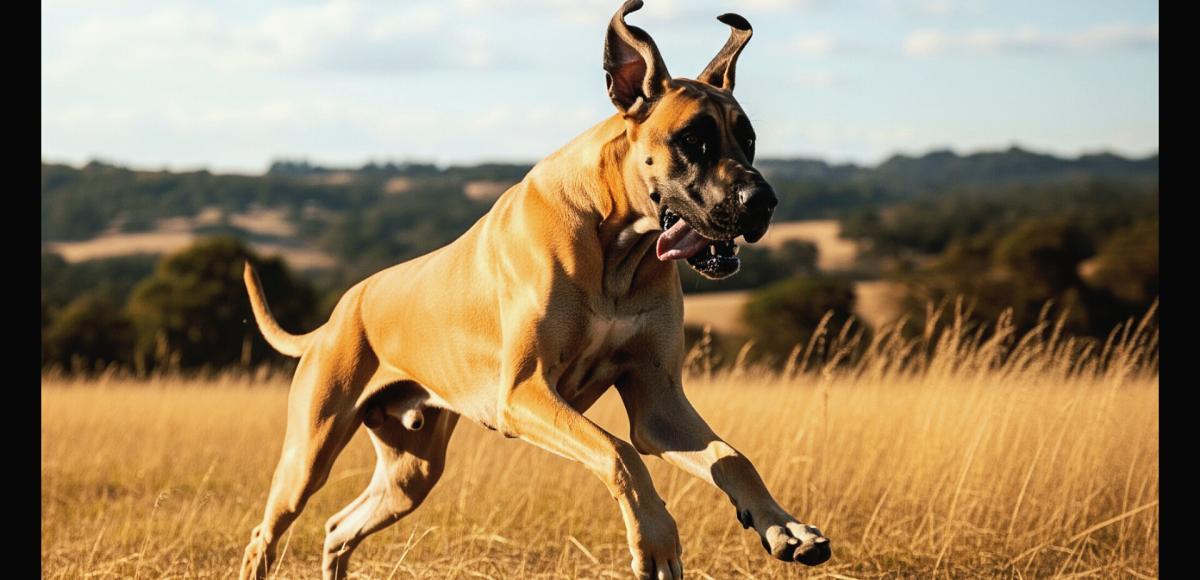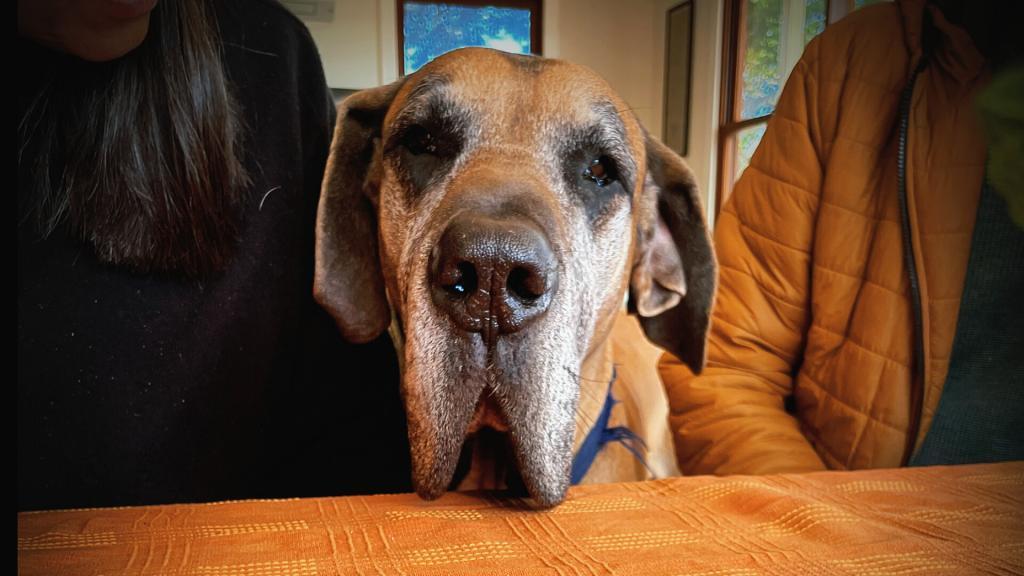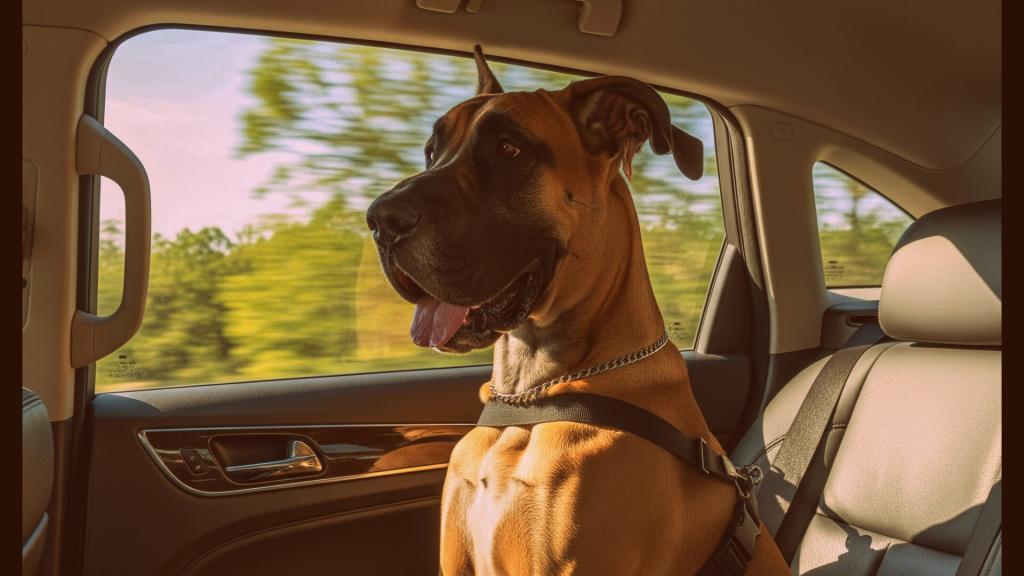
Great Dane Breed Spotlight
Great by name, but are they ‘Great’ by nature…. Let’s take a closer look at the Great Dane.
A Brief History of the Great Dane
Despite the name, the Great Dane has strong roots not in Denmark, but in Germany. Originally developed as a boar-hunting dog in the 16th century, early Great Danes (or “Boar Hounds”) were bred by German nobility to be strong, fast, and courageous (AKC, 2024; Britannica, 2024). Over time, these dogs transitioned from fearsome hunters to elegant companions, with breeding efforts focusing more on temperament and stature.
By the 18th century, the breed evolved into the more refined and affectionate giant we recognise today. Germany officially named the breed Deutsche Dogge (German Mastiff), though English-speaking countries retained the term “Great Dane” (FCI, 2023; GDCA, 2024).
Temperament & Personality
Often described as a gentle giant, the Great Dane is known for its calm, friendly demeanour. Despite their imposing size, they tend to be affectionate, social, and eager to please, making them excellent family companions when properly trained and socialised (AKC, 2024).
They’re generally patient with children, loyal to their families, and moderately protective — often alert but not aggressive. However, because of their size and strength, early training and consistent leadership are crucial. According to the Great Dane Club of America, the breed thrives on human interaction and may become anxious or withdrawn if left alone for extended periods (GDCA, 2024).
If you’ve ever met a big Great Dane and you weren’t expecting it, it can be quite the surprise initially due to the size.
Caring for a Great Dane
Owning a Great Dane comes with some unique responsibilities, largely due to their size and specific health considerations. Grooming is relatively simple as their short coat requires only weekly brushing to manage shedding and keep the coat shiny. However, their large frame means daily exercise is essential to prevent restlessness or destructive behaviour. That said, they are not endurance athletes. Short, structured walks and play are generally enough.
Despite their size, Great Danes adapt well to indoor living, provided they have room to stretch out and aren’t confined for long periods. They’re known to be “couch potatoes” and many will happily snooze near their humans once properly exercised.

Common Great Dane Health Issues
Like many giant breeds, Great Danes have a shorter average lifespan, typically 7–10 years (Longevity and mortality of owned dogs in England). They are particularly prone to certain conditions:
- Bloat (Gastric Dilatation-Volvulus): A life-threatening emergency where the stomach twists. Preventive measures include feeding smaller meals and avoiding vigorous activity post-meal (UFAW).
- Hip Dysplasia and Joint Issues: Common in large breeds. Regular vet checks and joint supplements may help with management.
- Dilated Cardiomyopathy (DCM): A serious heart condition known to affect the breed disproportionately (VCA).
Because of these risks, responsible breeding and early health screening are critical. Pet owners are encouraged to work with vets familiar with large breed health management.
Living Suitability
Great Danes are affectionate, house-oriented dogs that crave connection with their family. They do best in homes with:
- Room to move, even if it’s indoors.
- Owners committed to early training and socialisation.
- A lifestyle that allows them to spend most of their time with their owners.
While they don’t need acres of land, apartment living is only realistic if space and daily exercise needs are met — and you don’t mind a dog that weighs as much as a grown human

Dog Trainer’s Perspective
Great Danes are intelligent and eager to please but their sheer size makes early training important. A boisterous 70kg adolescent jumping up in excitement can be dangerous, even if well-meaning. That’s why puppy training and socialisation from as early as 8 weeks is essential.
Focus areas for Great Dane training include:
- Loose-leash walking – their strength makes pulling risky for both dog and owner.
- Manners and boundaries – especially around small children and furniture.
- Comprehensive socialisation and environmental conditioning.
We don’t really get Great Dane related specific issues, and as a breed they are very trainable. It’s purely that problematic behaviours are magnified by the Dane’s size and strength. The most common training issues we find is reactivity and fear through lack of socialisation. Both issues are can be somewhat more difficult with a 70kg dog that is either trying to retreat or run towards the stimulus.
When walking a Great Dane, you will find other dog owners will tend to cross the street before reaching you, ‘just in case’. But there are plenty of Dane lovers that will be excited to meet you as well.
So How Great is a Great Dane, and Should You Get One?
Great Danes really are great in all ways and they are one of the most majestic and loveable dogs available. But they are so big, that you generally will have to make changes or allowances and this makes them a somewhat uncommon companion.
If you are considering a breed as big as a Dane, you’ve probably considered all of the size related factors. If that’s you, it’s hard to beat a Dane as a giant loving family dog.



